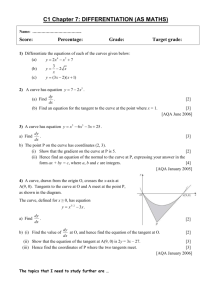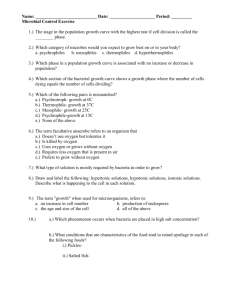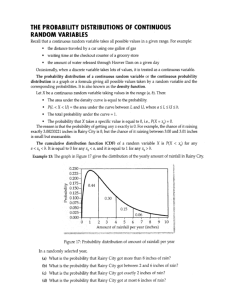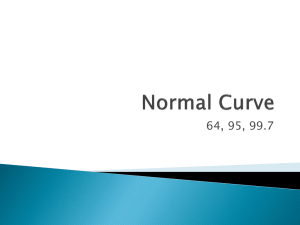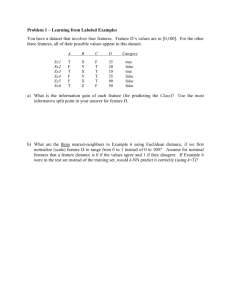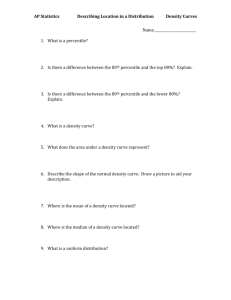Experimental Biogeography
advertisement
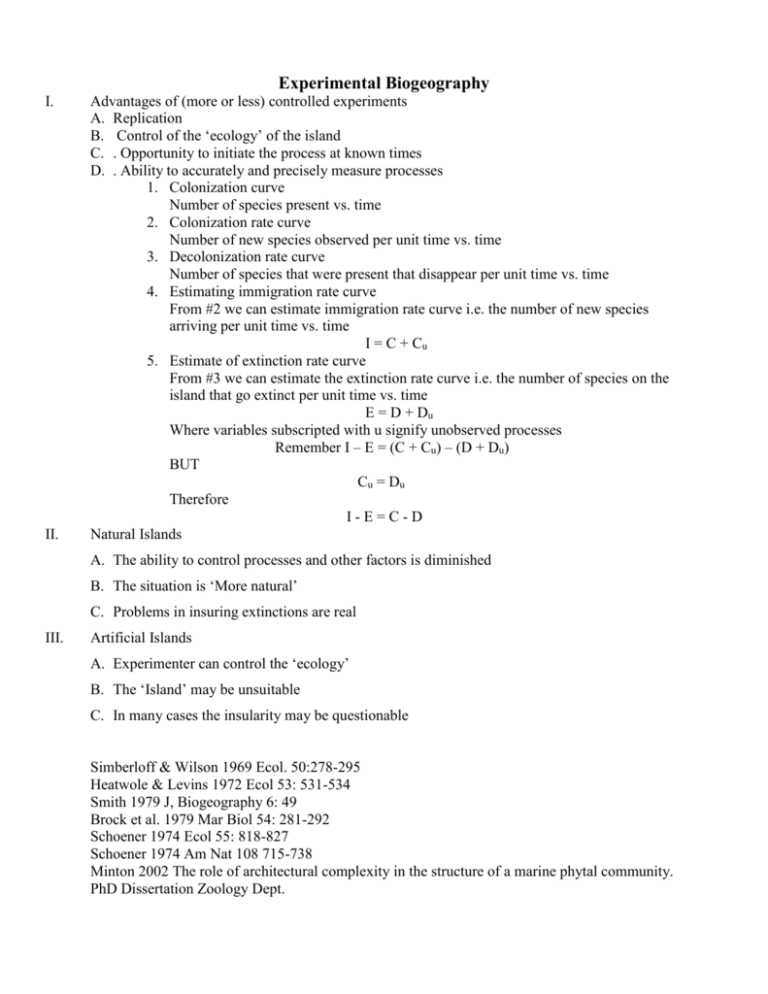
Experimental Biogeography I. II. Advantages of (more or less) controlled experiments A. Replication B. Control of the ‘ecology’ of the island C. . Opportunity to initiate the process at known times D. . Ability to accurately and precisely measure processes 1. Colonization curve Number of species present vs. time 2. Colonization rate curve Number of new species observed per unit time vs. time 3. Decolonization rate curve Number of species that were present that disappear per unit time vs. time 4. Estimating immigration rate curve From #2 we can estimate immigration rate curve i.e. the number of new species arriving per unit time vs. time I = C + Cu 5. Estimate of extinction rate curve From #3 we can estimate the extinction rate curve i.e. the number of species on the island that go extinct per unit time vs. time E = D + Du Where variables subscripted with u signify unobserved processes Remember I – E = (C + Cu) – (D + Du) BUT Cu = Du Therefore I-E=C-D Natural Islands A. The ability to control processes and other factors is diminished B. The situation is ‘More natural’ C. Problems in insuring extinctions are real III. Artificial Islands A. Experimenter can control the ‘ecology’ B. The ‘Island’ may be unsuitable C. In many cases the insularity may be questionable Simberloff & Wilson 1969 Ecol. 50:278-295 Heatwole & Levins 1972 Ecol 53: 531-534 Smith 1979 J, Biogeography 6: 49 Brock et al. 1979 Mar Biol 54: 281-292 Schoener 1974 Ecol 55: 818-827 Schoener 1974 Am Nat 108 715-738 Minton 2002 The role of architectural complexity in the structure of a marine phytal community. PhD Dissertation Zoology Dept.




